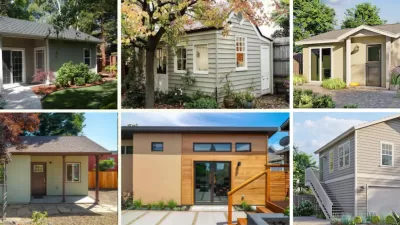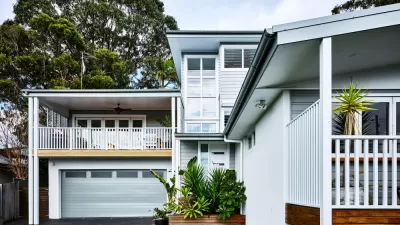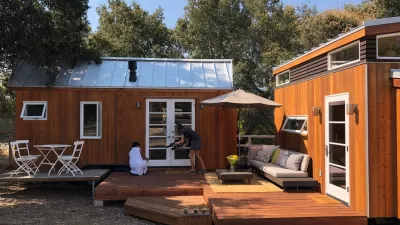Many cities aren't planning and designing for their aging residents, despite a world full of examples to model from, according to a new report from the Milliken Institute.

Jason Plautz shares news of new report from the Milliken Institute Center for the Future of Aging that documents the accommodations made for seniors living in cities, like safe and affordable housing, walkable neighborhoods, and access to healthcare.
The "Age-Forward Cities for 2030" [pdf] report finds that about "eight in 10 U.S. residents 65 and older live in metropolitan areas, and adults over 60 are expected to account for about half of urban consumption growth by 2030," according to Plautz.
"The report says that many American cities aren’t doing enough to prepare for the needs of an aging population, including a failure to acknowledge 'the interconnection between their aging communities and their cities’ economic health and sustainability.'"
The report also notes that some cities are making progress, especially by crafting age-friendly strategic plans, like those in Pittsburgh and Columbus. The report also identifies land use regulation reform that allows accessory dwelling units in single-family neighborhoods as an important step toward age friendliness. "And trends like new urbanism, complete streets and Vision Zero programs are also strategies that will help seniors, the report finds," according to Plautz.
FULL STORY: Report: Cities are 'ground zero' for seniors, but lack accommodations

Study: Maui’s Plan to Convert Vacation Rentals to Long-Term Housing Could Cause Nearly $1 Billion Economic Loss
The plan would reduce visitor accommodation by 25,% resulting in 1,900 jobs lost.

Alabama: Trump Terminates Settlements for Black Communities Harmed By Raw Sewage
Trump deemed the landmark civil rights agreement “illegal DEI and environmental justice policy.”

Why Should We Subsidize Public Transportation?
Many public transit agencies face financial stress due to rising costs, declining fare revenue, and declining subsidies. Transit advocates must provide a strong business case for increasing public transit funding.

Paris Bike Boom Leads to Steep Drop in Air Pollution
The French city’s air quality has improved dramatically in the past 20 years, coinciding with a growth in cycling.

Why Housing Costs More to Build in California Than in Texas
Hard costs like labor and materials combined with ‘soft’ costs such as permitting make building in the San Francisco Bay Area almost three times as costly as in Texas cities.

San Diego County Sees a Rise in Urban Coyotes
San Diego County experiences a rise in urban coyotes, as sightings become prevalent throughout its urban neighbourhoods and surrounding areas.
Urban Design for Planners 1: Software Tools
This six-course series explores essential urban design concepts using open source software and equips planners with the tools they need to participate fully in the urban design process.
Planning for Universal Design
Learn the tools for implementing Universal Design in planning regulations.
Smith Gee Studio
Alamo Area Metropolitan Planning Organization
City of Santa Clarita
Institute for Housing and Urban Development Studies (IHS)
City of Grandview
Harvard GSD Executive Education
Toledo-Lucas County Plan Commissions
Salt Lake City
NYU Wagner Graduate School of Public Service





























